Minhee Lee
Enriching Music Descriptions with a Finetuned-LLM and Metadata for Text-to-Music Retrieval
Oct 04, 2024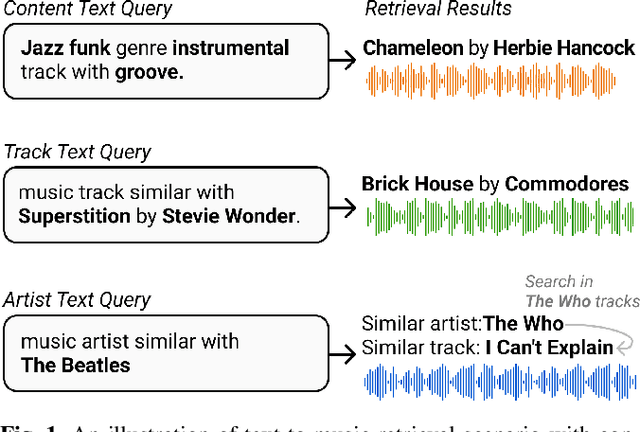
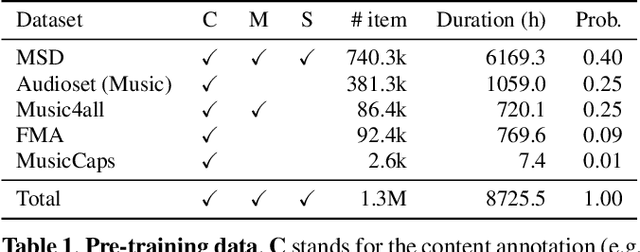
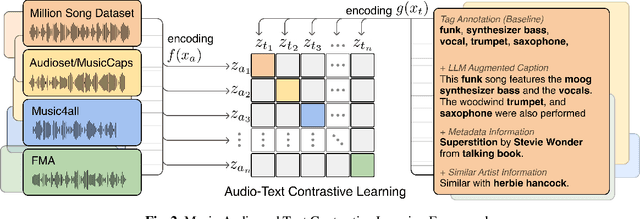

Abstract:Text-to-Music Retrieval, finding music based on a given natural language query, plays a pivotal role in content discovery within extensive music databases. To address this challenge, prior research has predominantly focused on a joint embedding of music audio and text, utilizing it to retrieve music tracks that exactly match descriptive queries related to musical attributes (i.e. genre, instrument) and contextual elements (i.e. mood, theme). However, users also articulate a need to explore music that shares similarities with their favorite tracks or artists, such as \textit{I need a similar track to Superstition by Stevie Wonder}. To address these concerns, this paper proposes an improved Text-to-Music Retrieval model, denoted as TTMR++, which utilizes rich text descriptions generated with a finetuned large language model and metadata. To accomplish this, we obtained various types of seed text from several existing music tag and caption datasets and a knowledge graph dataset of artists and tracks. The experimental results show the effectiveness of TTMR++ in comparison to state-of-the-art music-text joint embedding models through a comprehensive evaluation involving various musical text queries.
Can Audio Reveal Music Performance Difficulty? Insights from the Piano Syllabus Dataset
Mar 06, 2024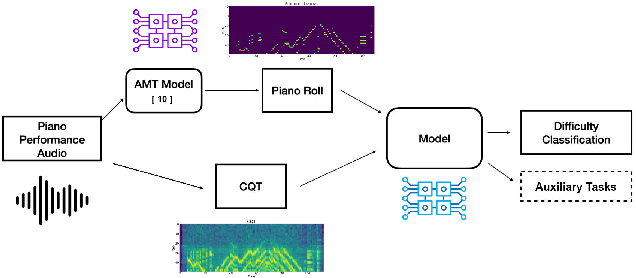
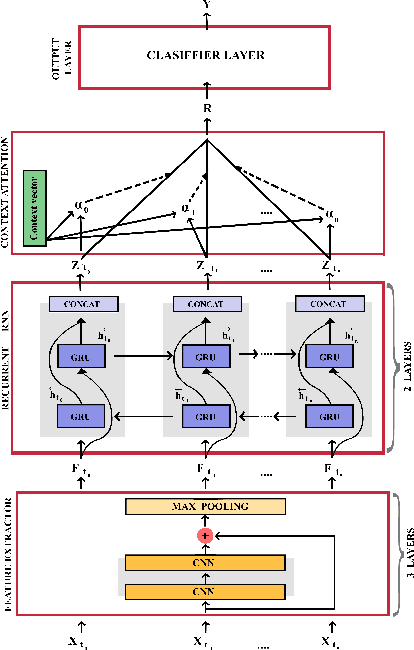
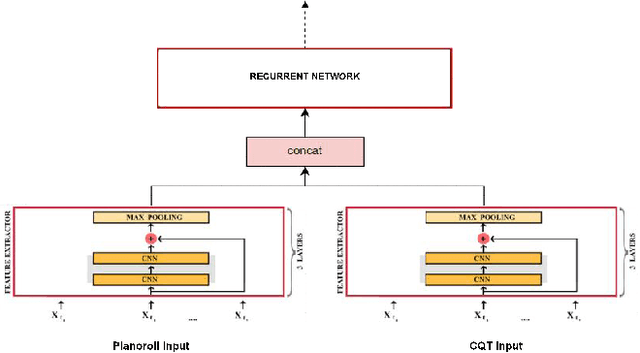

Abstract:Automatically estimating the performance difficulty of a music piece represents a key process in music education to create tailored curricula according to the individual needs of the students. Given its relevance, the Music Information Retrieval (MIR) field depicts some proof-of-concept works addressing this task that mainly focuses on high-level music abstractions such as machine-readable scores or music sheet images. In this regard, the potential of directly analyzing audio recordings has been generally neglected, which prevents students from exploring diverse music pieces that may not have a formal symbolic-level transcription. This work pioneers in the automatic estimation of performance difficulty of music pieces on audio recordings with two precise contributions: (i) the first audio-based difficulty estimation dataset -- namely, Piano Syllabus (PSyllabus) dataset -- featuring 7,901 piano pieces across 11 difficulty levels from 1,233 composers; and (ii) a recognition framework capable of managing different input representations -- both unimodal and multimodal manners -- directly derived from audio to perform the difficulty estimation task. The comprehensive experimentation comprising different pre-training schemes, input modalities, and multi-task scenarios prove the validity of the proposal and establishes PSyllabus as a reference dataset for audio-based difficulty estimation in the MIR field. The dataset as well as the developed code and trained models are publicly shared to promote further research in the field.
 Add to Chrome
Add to Chrome Add to Firefox
Add to Firefox Add to Edge
Add to Edge